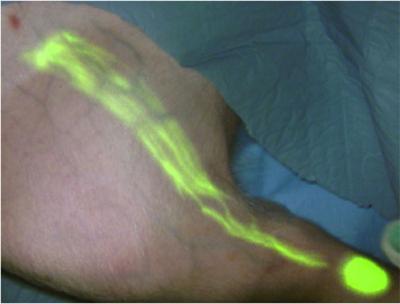 One of humanity’s fiercest enemies in the modern world is without a doubt this terrible malady, which has caused an endless number of deaths and suffering; while news and developments in treatment appear every day, there is still no safe receipe for curing it. However, if things get bad, there is now a new technique that allows a more precise operation, which involves less risks.
One of humanity’s fiercest enemies in the modern world is without a doubt this terrible malady, which has caused an endless number of deaths and suffering; while news and developments in treatment appear every day, there is still no safe receipe for curing it. However, if things get bad, there is now a new technique that allows a more precise operation, which involves less risks.
Today, cancer surgeons operate blindfolded, with no clear way of knowing if they have removed the damaged tissue (and all of it), which is the most important element in this kind of surgery. Researchers in Massachusetts reported that they have found a way to correct this, by a new imaging system that highlights cancerous tissue located in the body, thus aiding the doctors see exactly what they are doing.
This research shows promise for a number of diseases, which include breast, prostate, and lung cancer, whose tumor boundaries can be difficult to track at advanced stages.
“This technique is really the first time that cancer surgeons can see structures that are otherwise invisible, providing true image-guided surgery,” says project director John Frangioni, M.D., Ph.D., of Beth Israel Deaconess Medical Center (BIDMC) in Boston and co-director of its Center for Imaging Technology and Molecular Diagnostics. “If we’re able to see cancer, we have a chance of curing it.”
The system uses chemycal dies, which are designed to colour just particular damaged areas, which are invisible to the human eye. The computerized technique also gives them the chance of controling the viewing angle and magnify the tissue.
The future of the technology now is really in the chemistry,” Frangioni says. “We have to develop agents for specific tumors, nerves or blood vessels we’re trying to visualize.”









